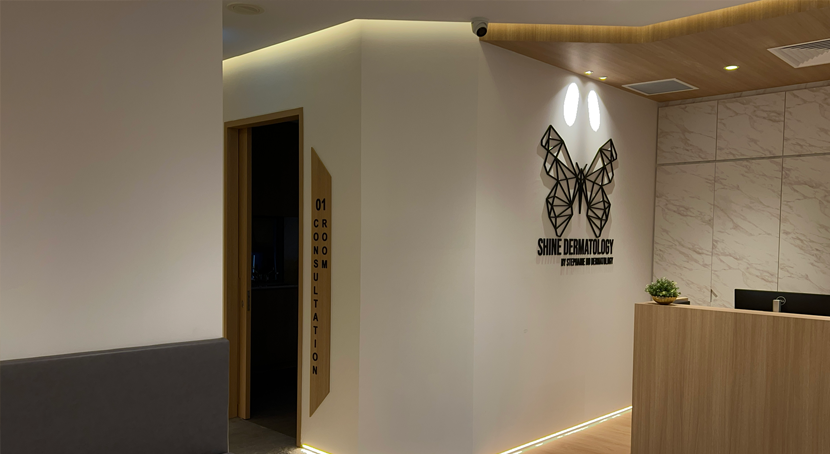What Are Sun and Age Spot Treatments?
Age and sun spot treatments are medically formulated approaches that reduce pigment buildup or remove benign growths caused by cumulative sun exposure and aging. We assess the type of pigmentation—whether superficial melanin (sun spots, freckles) or raised skin growths (age spots)—to select safe and effective solutions. These include:
For Sun Spots (Freckles, Lentigines, Melasma):
-
Topicals: Medical-grade lightening creams with hydroquinone or azelaic acid
-
Oral Therapies: Glutathione, Polypodium leucotomos, and tranexamic acid
-
Chemical Peels: Mandelic acid and pyruvic acid for epidermal exfoliation
-
Lasers: Picosecond laser (PicoWay) and Alexandrite laser
-
Microneedling RF: Sylfirm X for pigment and skin rejuvenation
For Age Spots (Seborrheic Keratoses, Skin Tags, Sebaceous Hyperplasia):
-
Electrosurgery: Precision removal of raised lesions
-
CO₂ Laser Ablation: Vaporizes superficial growths with minimal downtime
How Treatments Work
Our approach uses a multimodal strategy:
-
Topical Agents suppress melanin production and accelerate cell turnover.
-
Oral Supplements offer systemic antioxidant protection and reduce new pigment formation.
-
Laser Therapies deliver energy to break pigment into microparticles, safely cleared by the body.
-
Surgical Removal (for raised lesions) is performed using electrosurgery or CO₂ laser with excellent cosmetic outcomes.
Key Treatments & Indications
|
Treatment Type |
Application |
Mechanism |
Best For |
|
Hydroquinone 2–4% |
Prescription Cream |
Tyrosinase inhibition |
Superficial sun spots |
|
Azelaic Acid 15–20% |
Prescription Cream |
Anti-inflammatory + pigment control |
Sensitive skin |
|
Glutathione 500–1000 mg/day |
Oral Supplement |
Antioxidant & melanin reduction |
General pigmentation |
|
Polypodium Leucotomos (Phytofloral) |
Oral Supplement |
UV protection |
Preventing recurrence |
|
PicoWay Laser |
Device |
Picosecond pulses target melanin |
Deeper/larger sun spots |
|
Electrosurgery / CO₂ Laser |
Minor Surgery |
Ablative lesion removal |
Age-related raised spots |
When to Consider Treatment
You may benefit from professional treatment if:
-
Spots persist despite sun protection
-
Pigmentation is worsening over time
-
Spots affect confidence or complicate makeup/skincare
-
Raised growths are cosmetically concerning
Treatment Timeline
|
Treatment |
Sessions |
Visible Results |
Downtime |
|
Topicals |
Daily for 8–12 weeks |
6–8 weeks |
None |
|
Oral Supplements |
Daily for 3–6 months |
Gradual |
None |
|
PicoWay Laser |
2–3 sessions, 4 weeks apart |
2–4 weeks post-session |
Mild redness (24–48 hrs) |
|
Electrosurgery / CO₂ Laser |
1 session |
Immediate |
3–7 days healing |
Safety Considerations
Shine Dermatology ensures every treatment is tailored to your skin’s characteristics, minimizing risks such as irritation or post-inflammatory hyperpigmentation (PIH):
-
Lasers: Adjusted for darker skin tones with pretreatment tyrosinase inhibitors
-
Topicals: Rotated with niacinamide or azelaic acid to reduce sensitivity
-
Pregnancy: Azelaic acid and glycolic peels are preferred; oral treatments avoided
Frequently Asked Questions (FAQ)
Q: How soon will I see results with topical treatments?
A: Results begin in 6–8 weeks, with optimal clearance in 3 months if applied daily and paired with SPF 50+ sun protection.
Q: Are lasers safe for hands and chest?
A: Yes. PicoWay’s 1064 nm setting treats deeper pigment safely, even on delicate skin. Mild redness subsides in 24–48 hours.
Q: Can spots return after treatment?
A: Treated spots rarely recur, but new ones can form. Maintain results with sunscreen, antioxidant supplements, and occasional laser maintenance.
Q: What’s the best option for deep sun spots?
A: PicoWay laser combined with oral tranexamic acid often achieves 80–90% clearance in 2–3 sessions.
Q: Can I combine glutathione with laser therapy?
A: Yes. It enhances recovery and boosts skin brightness when taken before and after laser sessions.
Q: Are treatments suitable for all skin types?
A: Yes. We adapt protocols for Fitzpatrick types I–VI using skin-safe settings and protective skincare.
Q: Is there downtime after laser?
A: Most patients experience mild redness or swelling for 1–2 days. Avoid sun and harsh products during this period.
Q: Can I use over-the-counter creams instead?
A: OTC brighteners offer minimal results. Prescription creams provide faster, more significant pigment reduction.
Q: How important is sun protection?
A: Essential. Daily SPF 50+ and UV avoidance are critical to prevent recurrence.
Q: Can pregnant or breastfeeding women undergo treatment?
A: Avoid hydroquinone, retinoids, and oral antioxidants. Use azelaic acid and physical sunscreens instead. Always consult your doctor.
Q: Are these treatments painful?
A: Discomfort is minimal. Lasers feel like a light snap; numbing cream is used for comfort.
Q: Do hormonal changes affect pigmentation?
A: While not a direct cause, hormones can influence pigment stability. We may recommend supplements to support recovery.
Book Your Consultation Today
Take the first step towards radiant, even-toned skin. Schedule a personalized consultation with Shine Dermatology to discover the right treatment plan for your sun or age spots.



